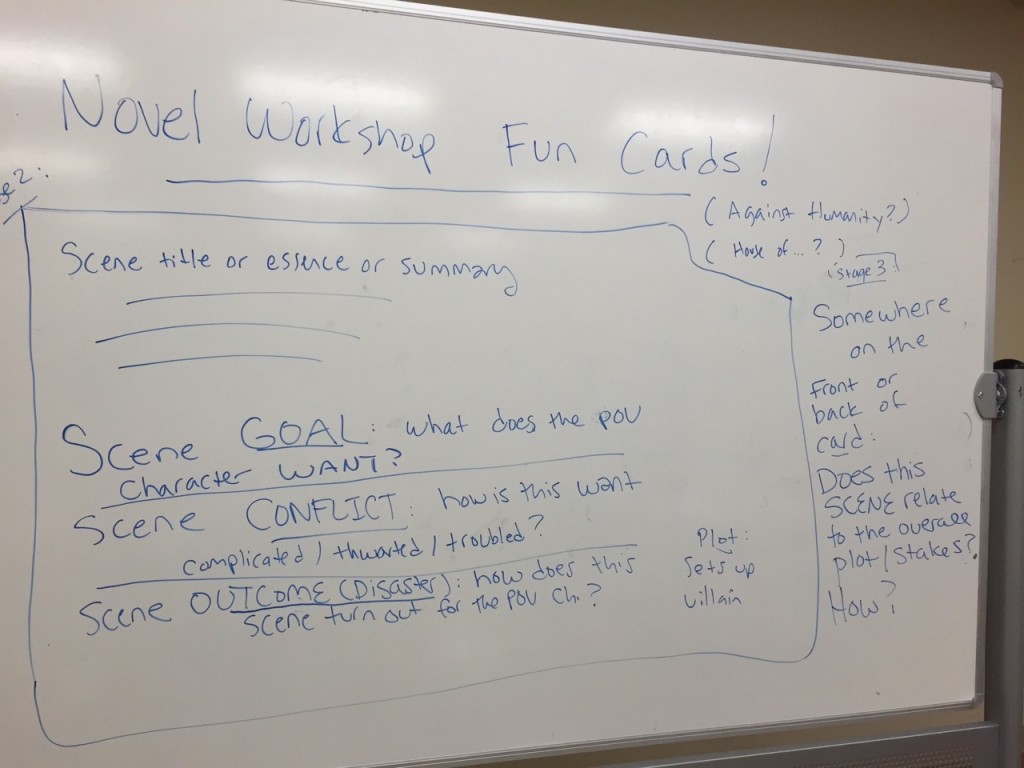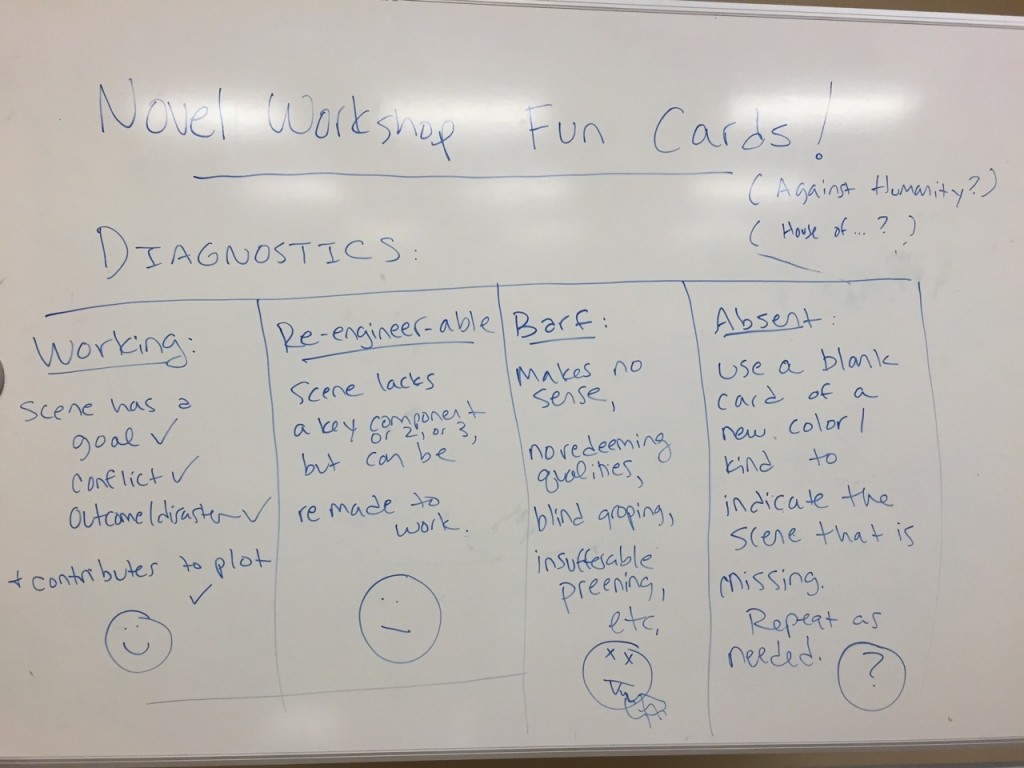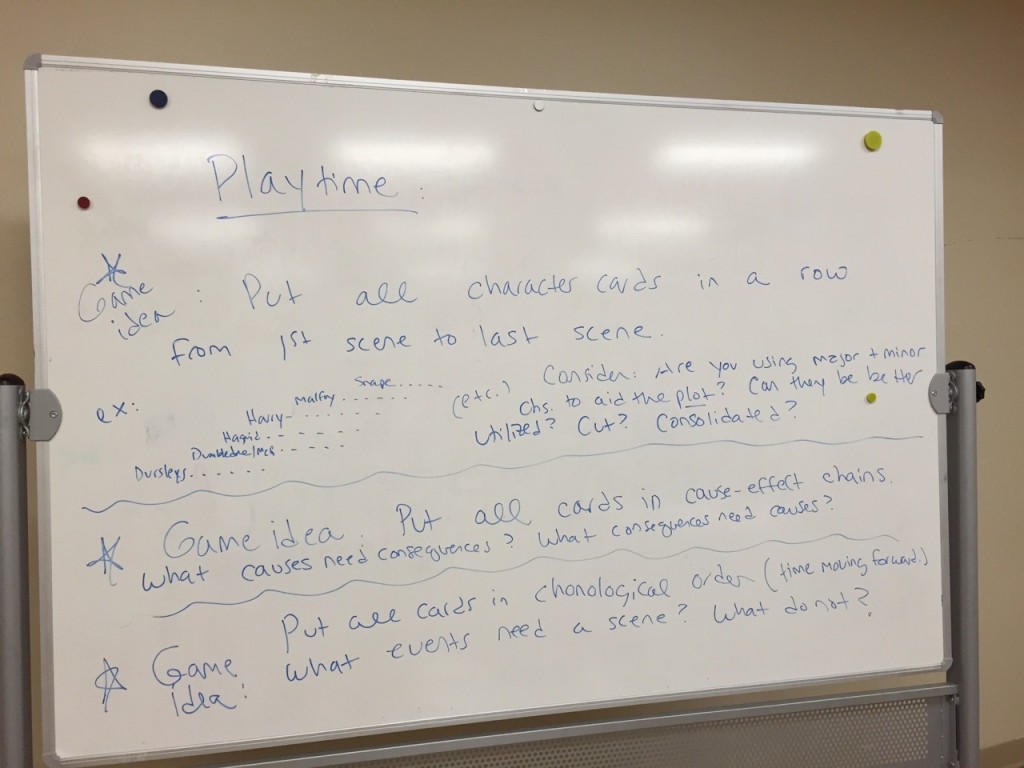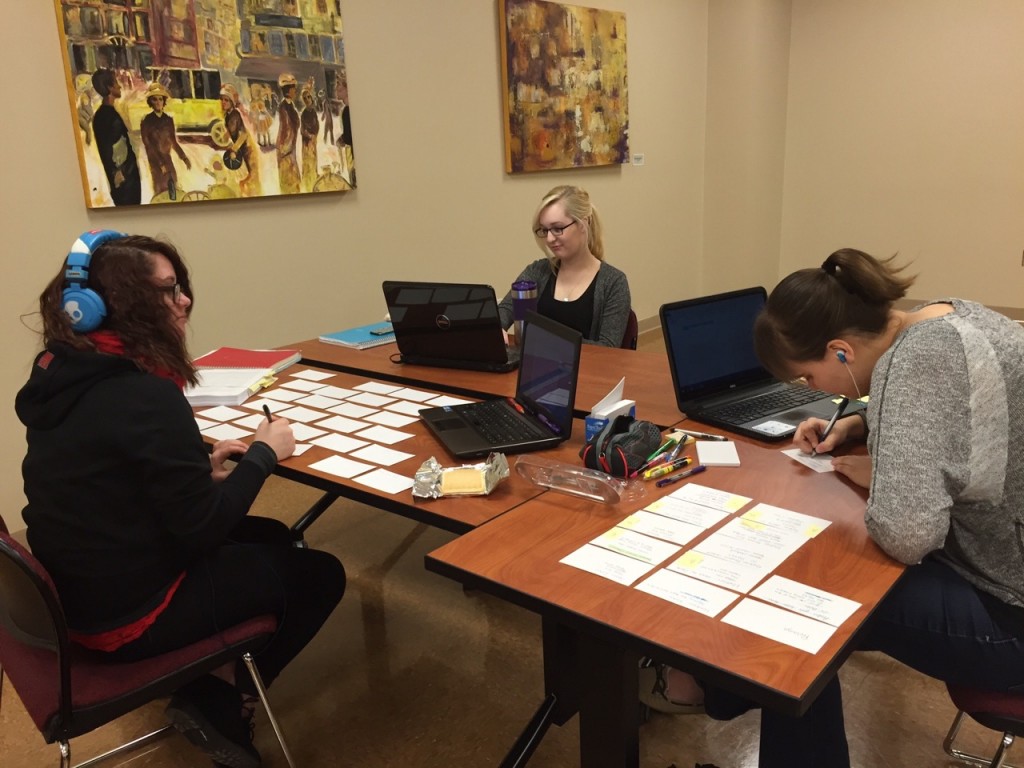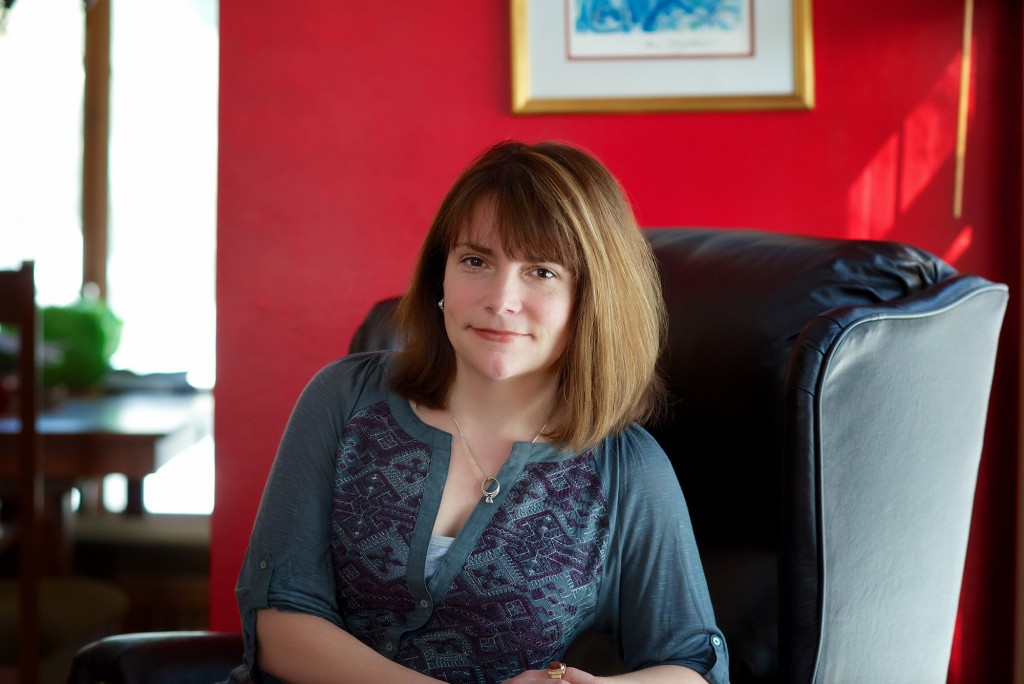
This is the latest in a series of guest posts on teaching creative writing. Rebecca Meacham responded to my post on 22 revision prompts, and I asked her if I could share her note-carding prompt.
As always, if you’re interested in contributing to this series, email me at m [dot] salesses [at gmail etc.].
Rebecca Meacham’s flash fiction collection, Morbid Curiosities, won the 2013 New Delta Review chapbook contest. Her story collection, Let’s Do, won University of North Texas Press’s 2004 Katherine Anne Porter Prize, and the book was a Barnes & Noble “Discover Great New Writers” selection. A Professor of English at University of Wisconsin-Green Bay, where she directs the creative writing program, Rebecca lives with her family in the woods of Wisconsin– which play an oddly large role in her first novel (in progress), about one of the worst wildfires in U.S. history. She can be found online on at http://rebeccameachamwriter.com and on twitter at @ibeccanne.
* * *
The Revision Activity: NOTE-CARDING: Dealing Out, In, and With the Scenes of Your Draft
Background: We ran our university’s first Novel-Writing workshops for undergrads (we only have undergrads in English) in Fall 2014. In Spring 2015, realizing a need to keep going, I led a Novel Revision Workshop, the ticket for entrance being a 50,000 word novel draft.
This brought up a problem: how to teach novel revision with 10 very different stories, in different states of being? On day one, I literally had students help me make the syllabus, based on what they perceived to be their novel drafts’ needs (and to buy a little time for me to read like 10 messy, big drafts in a week). And some elements, like scene and structure, seemed obvious to try during out 14 weeks together.
Here’s one activity I will definitely repeat.
Below is a crunchy, detailed, structure exercise, using what writers already have written. In the case of my class, what was already written was a 50,000 word draft. We were also using some textbooks on structure, including Scofield’s SCENE. Prior to this, we’d done some “big outlining” of the major dramatic points of their entire drafts.
Supplies needed
*Notecards
*Pens
*Any kind of classifying implements you might like: highlighters, stickers, post-its, color-coded notecards— whatever makes sense for the way you’re putting this novel together right now. Cards might be coded by character; setting or time divisions; none of the above— this is up to the author, and they may change their mind as they work.
*A large table, floor, or workspace to deal out the cards.
Step One: Making the Deck. This part takes a lot of time. For every SCENE in your draft, create one notecard with the following info: (see photo– Novel Fun Cards 1)
—Scene Title/essence/summary
—Scene GOAL: What does the POV character want?
—Scene CONFLICT: how is this desire complicated/thwarted/troubled/etc.?
—Scene OUTCOME: How does this scene turn out for the POV ch.
Also on the card, somewhere, address: Does this scene relate to the overall plot/stakes of the story? How?
Step Two: Diagnostics. This is evaluative. For every card you’ve made, identify how easy it was to fill out this info in Step One, and what you make of this. (see photo—Novel Fun Cards 2) Code or put a sticker on or otherwise catalog, using these Categories:
WORKING: The scene has a goal, conflict, outcome, and contributes to plot/stakes of story.
RE-ENGINEERABLE: Scene lacks a key component or two, but can be remade and could work.
BARF: Scene makes no sense, has no redeeming qualities, is blind groping, filled with insufferable preening, etc.
ABSENT: Use a blank notecard of a new kind or color to indicate that a scene that is missing or yet to be written.
Step Three: Dealing the Cards, Making New Games– Playtime. This step involves playing with variables. Do stuff with the cards to assess both what you have, and what you need to write. (see photos– Novel Fun Cards 3 and 4)
—Idea #1: Put all scene cards in chronological order (time must move forward as clock hands and calendars do). What events require a scene not yet written? (Make a note of this on one of the ABSENT/BLANK/YET TO BE WRITTEN cards). What events do not? Remove and add cards accordingly. How many can you remove before losing the heart or brain or live wires of the story? What happens to conflict, desire, etc. when you do?
–Idea #2: Move scenes around, out of time order, into other shapes. Mess around with sequence: could something set as a present scene become a flashback from the past? Move the cards. Or, create a row of cards with mounting danger and tension. Or place, randomly, scenes of quiet observation. Or, the kind of soundtrack you’d create for the movie of this novel, arrange the notecards like the phrasing of a musical piece. What happens to the story? Are any new arrangements worth saving?
—Idea #3: Put all cards related to a particular character in a row from first scene to last scene. What do you notice or see about the tensions, conflicts, and arc of the story? Do this with all characters to make one long timeline with several layers— what do you observe?
—Idea #4 —Make one card for every character, minor and major, in your work, and add them to your “deck.” Place Character Cards along the first-scene to last-scene timeline, (#2). Are minor characters being used to aid the plot? Could they more useful, or cut? Move different characters together and apart, remove them, place them in unusual combinations. What possibilities open up about combining and removing characters from scenes?
—Idea #5: Put all cards in cause and effect chains. What “effects” need “causes”? What “causes” need ‘effects”? Make and place blank (ABSENT—TO BE WRITTEN) cards if you see gaps.
—Idea #6: Have beta readers /workshop groups that know the work look at the cards in some order you’ve decided. Get their input. Do the same with someone who has no idea what the story is. Get their input.
And so on. Play!
Takeaway: This is low-stakes— after all, nothing really needs to be cut or added to the manuscript. Using this macro view, looking down from the clouds and seeing the landscape of the novel, albeit in notecards, can reveal potential redundancies, stalled points, digressions, plot gaps, information holes– as well as new scenes, relationships, plot points, tone shifts, intensities, and desires. The Deck can change as the draft changes. Cards can be added, cut, re-dealt, shuffled, etc.
Useful? It’s helped me, so I hope so.


